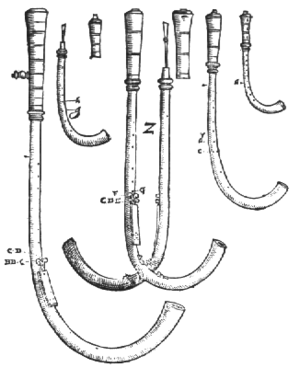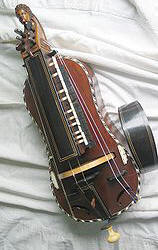RENAISSANCE MUSIC
| |||||||
| fine-knacks-for-ladies.mp3 | |
| File Size: | 4919 kb |
| File Type: | mp3 |
Renaissance instruments
The crumhorn was the most important double reed wind cap instrument in the sixteenth and early seventeenth century.
The hurdy-gurdy - a stringed instrument that produces sound by a hand crank-turned, rosined wheel rubbing against the strings. was also very popular (along with the bagpipe); the characteristic form had a short neck and a boxy body with a curved tail end.





